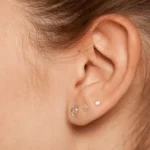THE WHAT? A consortium of Australian fashion brands is calling on the government to up its quota of Afghan refugees, according to a report published by The Guardian, promising to support incomers to find employment in the industry.
THE DETAILS In an open letter to the Australian government, which forms part of a wider campaign called Voices for Afghanistan, some 24 signatories implored the government to increase its intake of Afghan refugees from the initial 3,000 it has announced.
THE WHY? Camilla Schippa, CEO of The Social Outfit, told The Guardian that the Australian fashion industry had long employed migrant women. As the open letter reads, per The Guardian, “Australia has a long tradition of responding decisively and generously to humanitarian crises, as demonstrated by special intakes of Albanian Kosovars in 1999 and Vietnamese refugees following the Vietnam was, as well as more recently with the intake of refugees from Syria and Iraq.
Numerous members of these communities have been employed by the Australian fashion sector, especially in manufacturing, and we can do it again.”
Aesthetic medicine products are developed and regulated to meet stringent safety and efficacy standards. They are typically administered by trained healthcare professionals such as dermatologists, plastic surgeons, and specialized nurses in clinical settings. These products aim to provide effective solutions for cosmetic enhancement, skin rejuvenation, and overall aesthetic improvement, contributing to both physical appearance and self-confidence.
Key categories of aesthetic medicine products include:
-
Injectables: This category includes products such as dermal fillers, botulinum toxins (e.g., Botox), and collagen stimulators. These injectables are used to smooth wrinkles, add volume, and improve facial contours.
-
Skin Rejuvenation Treatments: Products like chemical peels, microdermabrasion systems, and laser devices are used to improve skin texture, reduce pigmentation irregularities, and enhance overall skin tone.
-
Skincare Products: These include medical-grade cleansers, moisturizers, serums, and topical treatments containing active ingredients like retinoids, antioxidants, and growth factors. They are formulated to address specific skin concerns such as acne, aging, and hyperpigmentation.
-
Hair Restoration Products: Medical treatments and products designed to promote hair growth and treat conditions such as male and female pattern baldness.
-
Body Contouring and Fat Reduction: Devices and products used for non-surgical body sculpting, such as cryolipolysis (cool sculpting) devices and injectable lipolytics.
-
Cosmeceuticals: High-performance skincare products that bridge the gap between cosmetics and pharmaceuticals, often containing potent ingredients with proven clinical benefits.
-
Wound Care and Scar Management: Products like silicone sheets, gels, and advanced wound dressings used to improve healing and reduce the appearance of scars.




